Assault on Kanaloa Kaho‘olawe
Ka mauli o ka ‘Āina a he mauli kanaka
The life of the land is the life of the people
-
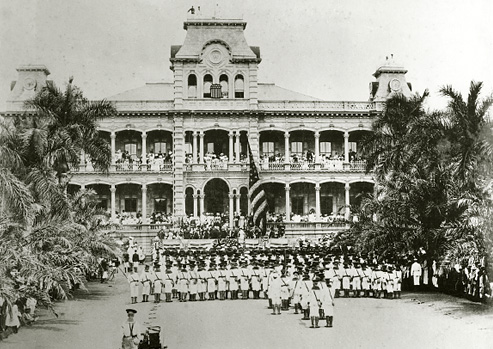
Ceremony marking the United States’ claim of annexation of Hawai‘i, 1898
Courtesy Bishop Museum
Much of the valuable knowledge of voyaging was lost as a consequence of the suppression of traditional ways by American colonizers and missionaries, and by the invasion, claimed annexation, and occupation of Hawai‘i by the United States government.
-
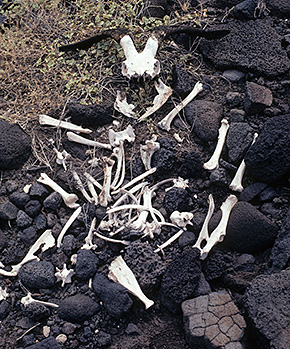
Goat bones on the island, 1980
Courtesy Dr. Mark D. Merlin, Professor of Botany, University of Hawai‘i
As well as inhibiting Native Hawaiian customs, the occupiers seized property for their exclusive use and banished the people from their sacred lands. The arrival of outsiders put Kanaloa Kaho‘olawe in jeopardy. In 1793, goats were presented as a gift from British naval captain George Vancouver to Chief Kahekili of Maui who released them on the island. The introduction of this foreign species undermined the ecological balance of the land over the course of the nineteenth century. The rise of the population to about 40,000 animals, and the uncontrolled grazing of cattle and sheep allowed by ranchers, caused massive soil erosion.
-
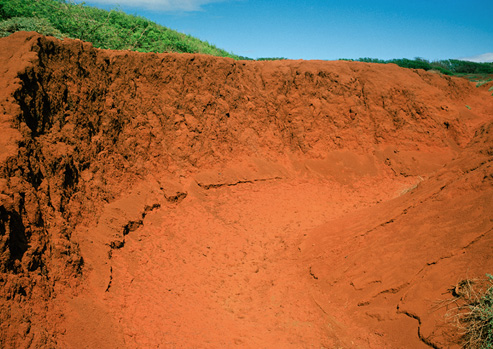
Soil erosion caused by uncontrolled animal grazing and bombing, near the topside target area west of Luakealialalo, 1993
Courtesy Franco Salmoiraghi
-
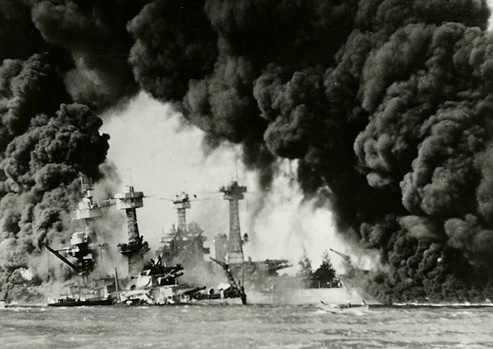
Battleships under attack in Pearl Harbor, 1941
Courtesy University of Hawai‘i, Mānoa, Hamilton Library, Hawai‘i War Records Depository
In 1941, after the Japanese bombing of Pearl Harbor, O‘ahu prompted United States participation in the Second World War, the U.S. government declared martial law in Hawai‘i and seized Kanaloa Kah‘olawe for bombing and training exercises.
-
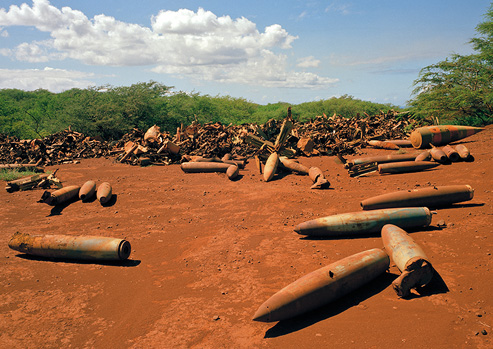
Unexploded ordnance, 1994
Courtesy Franco Salmoiraghi
-
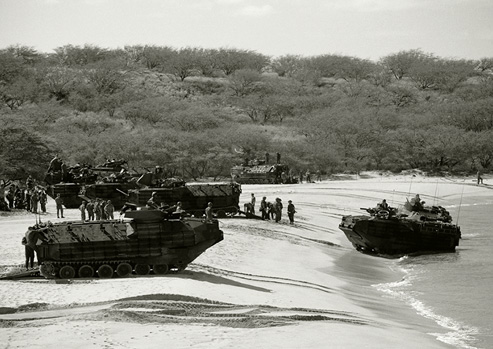
Military exercises at Hanakanai‘a, 1993
Courtesy Franco Salmoiraghi
-
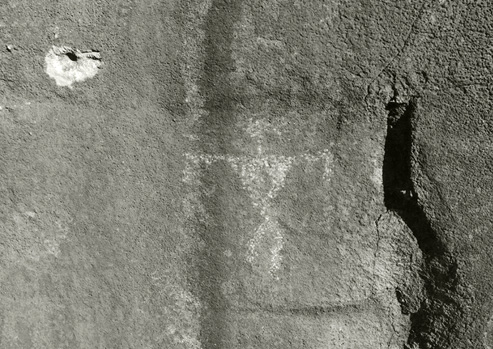
A bullet hole near a petroglyph, 1994
Courtesy Franco Salmoiraghi
Over the next fifty years, many of the island’s ancient petroglyphs and sacred sites were damaged by military training activities which scattered unexploded ordnance throughout the area. Overgrazing by feral goats further decimating the uninhabited land.









